Humanoid Robot Rental: Daily Fee of ¥25,000, Orders Stretch Beyond National Day
![]() 02/27 2025
02/27 2025
![]() 579
579
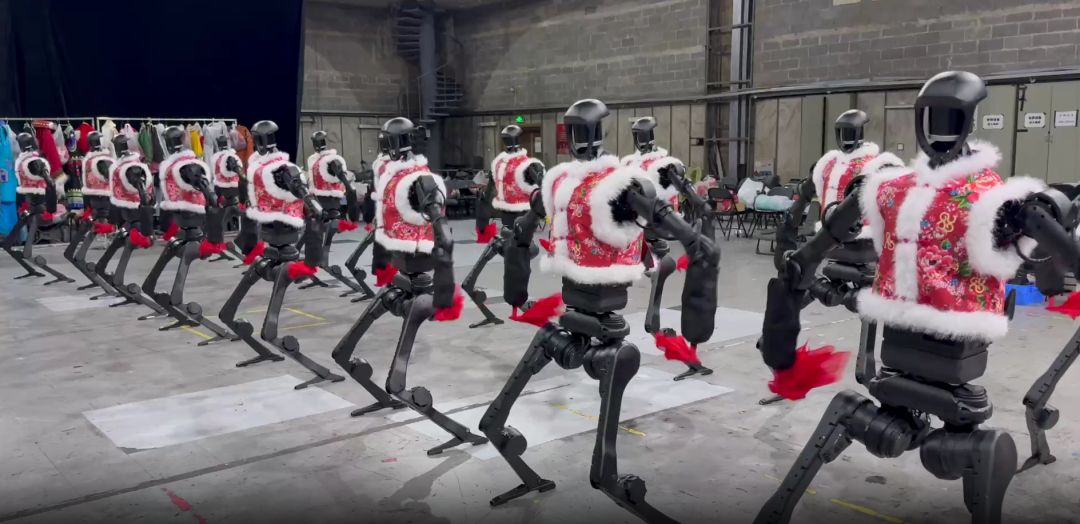
Image Source: Unitree Robotics Official Website
First Wave of Robot Brokers Reap Substantial Profits
By Li Jinlin
Edited by Li Wenjie
Typeset by Annalee
Forty years ago, the movie "Terminator" shattered perceptions of robots. Muscular, blood-filled humanoid robots arrived on Earth in 2029 to wage war between humans and machines.
Today, four years before that fictional year, humanoid robots are all the rage. While reality falls short of the movies, a small wave of excitement is undeniably building.
On February 25, Unitree Robotics' humanoid robot, which gained popularity during the Spring Festival Gala with its "Yang BOT" performance, underwent another upgrade. According to Unitree Robotics' updated video, the company's G1 humanoid robot has mastered complex martial arts moves like punching and spinning kicks through algorithm enhancements, expanding the public's imagination of humanoid robots.
In fact, 2024 is considered the inaugural year for the global release of humanoid robot prototypes. A video released by Musk in January last year, showcasing Tesla's "Optimus" humanoid robot folding a shirt, served as a catalyst for the industry's surge. This year, robot products from domestic and foreign manufacturers have been launched and upgraded successively, offering more diverse applications.
With high prices and low production volumes, the market demand for robot performances and exhibitions is growing daily. Consequently, the robot rental business is booming, and humanoid robots have embarked on a nationwide tour, complete with planes and butlers.
Are they merely for waving at such a high rental price?
In the past week, Ren Na has had to decline several business orders daily. "It's not that we don't want to make money; it's just that the number of robots is indeed limited." Since the new year, as a salesperson, Ren Na has experienced firsthand the pressure of fulfilling orders, with a steady stream of customers inquiring about robot rentals every day.
Ren Na's company owns a total of four Unitree G1 humanoid robots. When Zinc Kedu inquired about them, all four robots were "working" offsite, with no available slots until mid-March.
"If you want to rent a robot, you need to book at least 15 days in advance. For holiday use, book as early as possible, at least a month ahead." As she said this, Ren Na opened the schedule to show that there were very few available slots left for this year's May Day and National Day holidays.

Robot Performance Organized by Ren Na's Company
Due to the current peak season, there are numerous event projects nationwide, coupled with the shortage of humanoid robots in the market, causing prices to rise naturally. Ren Na's rental price is an all-inclusive ¥25,000, covering equipment transportation, rental, and technician costs. Even though this price is already high, Ren Na still said, "It will go up later."
Other merchants on the market offer relatively lower quotes, mostly ranging from ¥13,000 to ¥15,000 all-inclusive, with some as low as ¥8,000 per day per unit. Overall, pricing varies widely. Ren Na explained that her company's higher pricing than the market average is because they sign a formal contract with the customer after confirming the order and provide an invoice, using business-to-business payment methods.
"The humanoid robot rental business is too hot right now, and there are many low-price traps. Initially, the rental price may seem cheap, but later you'll find that either the goods don't match the description, or there are numerous additional fees." Ren Na also revealed, "Some people exaggerate the robots' functions, and you have to discern truth from falsehood yourself."
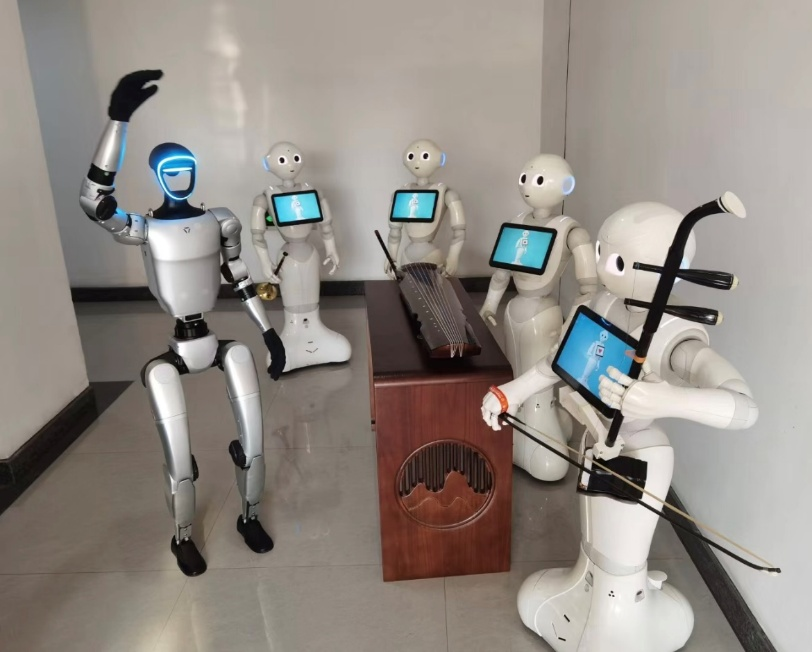
Robot Performance Team
Taking the Unitree G1 humanoid robot as an example, it only performs functions like standing, walking, waving, and shaking hands and cannot execute actions such as dancing, somersaults, or Yangko dance. So even if you rent it at a high price, don't expect to see the program effect from the Spring Festival Gala.
A recent event in Hangzhou handled by Ren Na's company showcases the current typical scenario for humanoid robot work: a humanoid robot stands in the front row, with its head display screen changing lights and expressions according to the preset program. Its feet occasionally move left and right a few steps and then turn in circles, while its hands constantly switch between left and right hand waving actions.
Throughout the performance, the humanoid robot undoubtedly "does the least work and earns the most money," because the dozen or so real-life dancers standing behind it are the ones who work the hardest and are the core of supporting the entire performance.
Robot Dogs Follow Suit, Dragon and Lion Dances Featuring Monkey King
If the popularity of the humanoid robot rental business is tied to "Yang BOT," then other types of machine performances seem a bit nonsensical.
When the daily rental fee for humanoid robots easily surpasses tens of thousands of yuan, a viable alternative emerges. "It's also from Unitree Robotics. The price is dozens of times cheaper, and the effect is also impressive," Zou Shu didn't secure a Unitree humanoid robot but relied on robot dogs to thrive in the rental business.
Zou Shu's company, based in Guangzhou, is equipped with a total of six Unitree go2air robot dogs. There are no available slots until mid-March. Clients typically rent robot dogs for new store openings, short video shoots, advertising shoots, etc.
While the performances that humanoid robots can complete are extremely simple, due to their sufficient gimmick, the rental price easily exceeds ten thousand yuan, continually pushing up overall market heat, allowing robot dogs to also benefit from this trend.
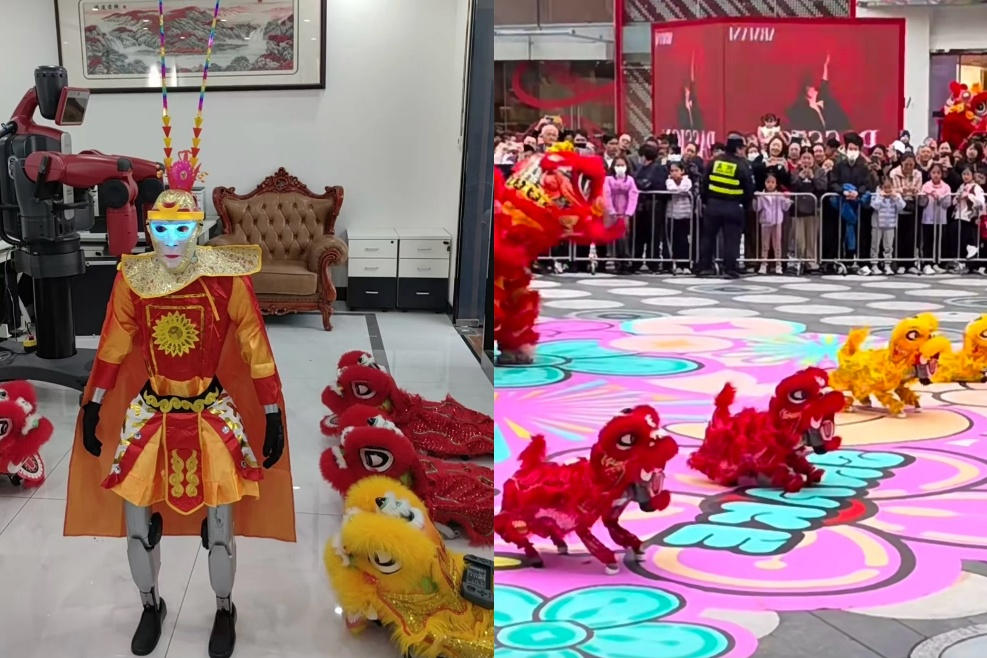
Robot Dog Rental Business Also Heating Up
According to Zou Shu's quote, the rental fee for robot dogs is ¥200 per dog per day, and ¥250 per dog per day with costumes. If technicians are required, an additional ¥400 per day operation fee will be charged. However, Zou Shu noted that robot dogs are not as expensive as humanoid robots and are easy to operate. Even without hiring professional operators, clients can easily get started based on the detailed tutorials they provide.
Comparing the current prices on the Unitree Robotics official website, the starting price of the humanoid robot G1 is ¥99,000, while the starting price of the robot dog go2 is ¥9,997, with a price difference of at least ten times. Therefore, for many enterprises aiming to capitalize on this trend, starting with robot dogs is the best choice.
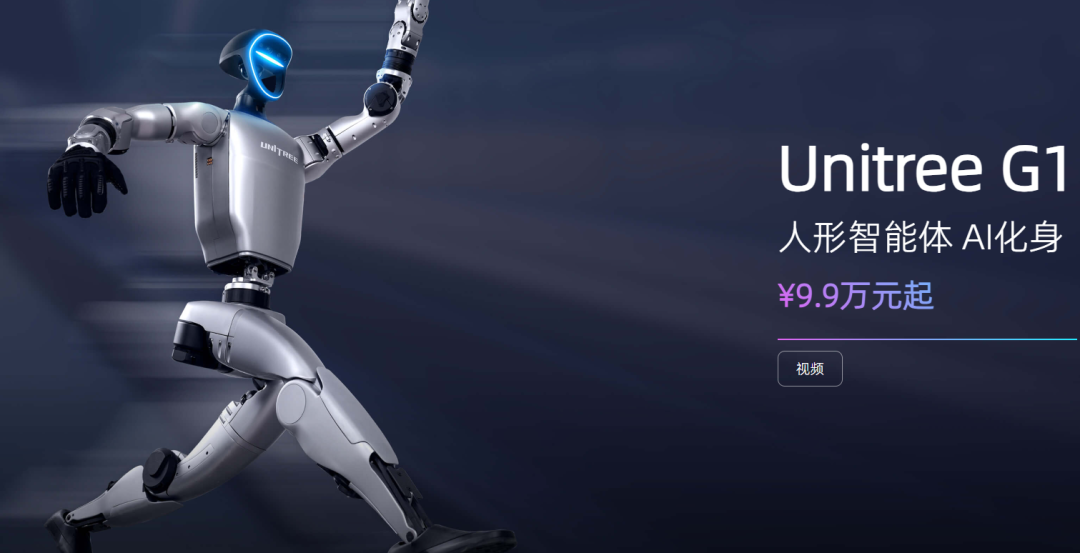
Unitree G1 Humanoid Robot Starting Price of ¥99,000
However, compared to humanoid robots that come with their own traffic, robot dogs and ordinary robots need to put more effort into their performances to provide sufficient attraction. Zinc Kedu learned that rental teams dress these robots in various styles such as lion dance, dragon dance, and Monkey King costumes and even set them up to perform actions like playing the erhu, accompanied by corresponding music, to create a complete performance.
While no one knows how long the robot "touring" craze will last, judging from the current rental fees and market heat, the first wave of merchants who caught this trend have gradually lined their pockets.
When Will They Enter Ordinary Households?
The popularity of the rental market illustrates the fascination with humanoid robots but also shows that this is still a niche market. No matter how advanced the technology, without a cost advantage, it will never become a product suitable for the general public.
In this regard, Wang Xingxing, the founder of Unitree Robotics, discussed it in an interview with Shijuezhi, "The rental cost of G1 is declining at a rate of 37% per year. When the hourly wage cost of robots falls below ¥20, the human service industry will undergo a fundamental transformation."
Specifically, he has a goal: to enable aunties in Chinese counties to use robots to dance square dances. This aligns with Musk's vision. In October last year, Musk expressed his hope that everyone will own a humanoid robot in the future.
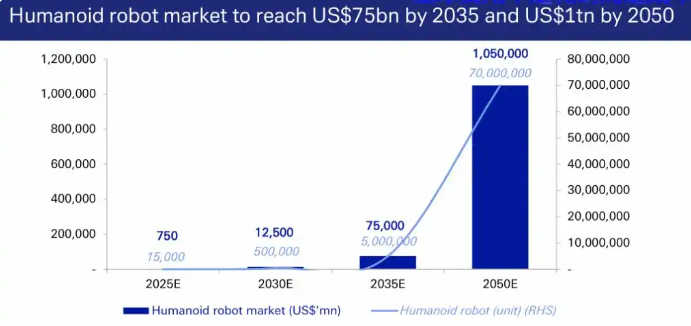
Humanoid Robot Market Size Expected to Exceed $1 Trillion by 2050 Image Source: Deutsche Bank Report
The market prospects look promising. Starting from 2023, approximately 20 humanoid robot companies such as Xingchen Intelligence, Xingdong Jiyuan, and Zhiyuan Robotics have been established. Established player UBTECH has also successfully become the "first humanoid robot stock." Coupled with Unitree Robotics reigniting interest in humanoid robots, the entire industry seems to have entered a fast lane.
According to the "Humanoid Robot Industry Research Report," China has become a globally leading producer of humanoid robots. In 2024, the size of China's humanoid robot market reached approximately ¥2.76 billion and is expected to grow into a "¥100 billion market" by 2030. According to Qichacha data, the number of existing robot-related enterprises in China has grown from 13,300 in 2014 to 178,500 in 2023, an increase of 13 times.
However, the initial landing spot for humanoid robots is often industrial scenarios. From Musk's Optimus taking up positions in factories to sort, carry parts, and deliver coffee, to UBTECH's industrial humanoid robots being put into practical training in the Hefei NIO factory's final assembly workshop, and Fourier humanoid robots guiding and diverting calls in the lobby of the Construction Bank, conducting anti-fraud training for customers, etc.
However, these functions are not what ordinary people need, nor are Yangko dance, somersaults, and dancing. Besides "looking like humans," ordinary people want robots that are truly useful, providing practical assistance in various life scenarios. To realize this dream, humanoid robot enterprises need to overcome numerous comprehensive challenges, and each link requires sufficient patience and investment.
This is a race about future productivity and a dream moving from science fiction to reality.








